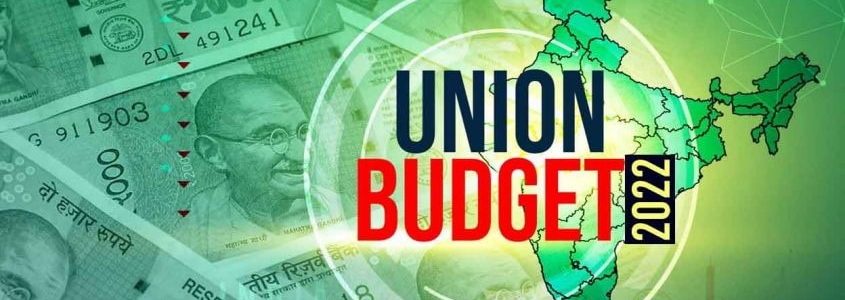Non-tech elements like community engagement and governance are important to realise the true potential of India’s digital platforms
Authors: Varad Pande & Rohit Kumar
Published: March 07, 2022 in the Indian Express
 A lot has been written about the emphasis on ‘digital’ in the 2022 Union Budget (indeed, the word ‘digital’ was mentioned over 30 times in the Finance Minister’s speech). But one aspect of this emphasis that hasn’t been talked about as much is the importance given in the budget to digital public infrastructure (DPI) – the idea that cross-sectoral ‘digital rails’ like ID, payments and data exchanges when combined with open interconnected data systems in sectors like health, education and social protection, can transform service delivery for ordinary citizens.
A lot has been written about the emphasis on ‘digital’ in the 2022 Union Budget (indeed, the word ‘digital’ was mentioned over 30 times in the Finance Minister’s speech). But one aspect of this emphasis that hasn’t been talked about as much is the importance given in the budget to digital public infrastructure (DPI) – the idea that cross-sectoral ‘digital rails’ like ID, payments and data exchanges when combined with open interconnected data systems in sectors like health, education and social protection, can transform service delivery for ordinary citizens.
India is seen as a global trendsetter in the DPI movement having set up multiple large scale DPIs like Aadhar for ID, UPI for payments and sector specific platforms like DIGIT for eGovernance and DIKSHA for education. Each of these have helped push the frontier of public service delivery in the country.
This year’s budget adds to the growing discourse on DPIs by making four key announcements – in health, an open platform with digital registries, a unique health identity and a robust consent framework; in skilling, a Digital Ecosystem for Skilling and Livelihood (DESH-Stack) to help citizens upskill through online training; a Unified Logistics Interface Platform (ULIP) to streamline movement of goods across various modes of transport; and for travel, an ‘open source’ mobility stack for facilitating seamless travel of passengers.
These announcements are a welcome development. Research by Omidyar Network India and BCG shows that the creation of national digital ecosystems in sectors like health, jobs and skilling, agriculture and justice, can lead to economic opportunities worth 50 lakh crore by 2030. Similar analysis by the Centre for Digital Economy Policy Research (C-DEP) also estimates that national digital ecosystems could add over 5% to India’s GDP.
But even as the potential benefits can be immense, there are important design considerations that we must get right if we are to truly unlock the value of these platforms for the larger good of citizens. One way to think about this is by differentiating between the ‘tech’ and the ‘non-tech’ layers of our digital infrastructure – while India seems to have made significant headway on the ‘tech’ layers, the ‘non-tech’ layers of community engagement and governance still need a lot more work. The combination of these three layers – technology, community and governance – is what is critical to making tech work for everyone. Together they embody what we call the open digital ecosystems (ODE) approach.
To unleash the true potential of India’s ODEs, we need to get the ‘non-tech’ layers right, by prioritising principles around data protection, universal access and accountability. While this presents a large menu, three specific non-tech levers are critical to get right.
First, protecting data of all users and giving them agency over how their data gets used. The passage of a robust Data Protection Bill is imperative. But, we also need to go beyond the mere requirement of ‘consent’ which is the core of data protection legislations. Consent as a construct is insufficient, as anyone who has tried to read privacy policies on their phones knows – it forces you to make a binary choice, in quick time, in an environment of information overload in dense legalese. While this is a tough problem to solve, recent research by the Centre for Social and Behaviour Change (CSBC) suggests that users can be “nudged” to make privacy conscious decisions by providing standardised privacy ratings, presenting privacy policies more visually, and mandating users to stay on the privacy page for at least a few minutes.
Second, it is important to address India’s digital divide when service delivery through tech. Research by ORF, for instance, shows that Indian women are 15% less likely to own a mobile phone, and 33% less likely to use mobile internet services than men. This, and other such disparities including India’s rural-urban divide, can undermine the country’s ODE project and lead to large scale exclusion if not consciously addressed.
So we need a ‘phygital’ approach that leverages multimodal service delivery through both online and offline options and strong grievance redressal mechanisms. Research by Aapti Institute and eGovernments Foundation has shown that leveraging trusted local intermediaries who are embedded in communities — local influencers, grassroots NGOs etc — can significantly improve access to tech platforms for marginalised groups.
Finally, as we push the frontier on digitisation, India must also focus on developing anchor institutions and robust governance frameworks to ensure that its tech infrastructure remains fit for purpose and accountable. Just as Aadhaar is anchored by UIDAI under an Act of Parliament, and the Ayushman Bharat Digital Mission (ABDM) is anchored by the National Health Authority, every new ODE requires an enabling and accountable institutional anchor. These institutions are critical for setting standards, ensuring a level playing field and safeguarding consumer interest while ensuring speedy grievance redressal. The sector-specific institutions also need to be complemented by a national level ‘National ODE Council’ to inform coordinated policies and keep the focus on citizen-centricity.
India has embarked on a unique journey of tech led service delivery at unprecedented scale and speed. From Aadhaar and UPI to DBT and CoWin – India’s tech stacks are grabbing the attention of the world. It is now critical to bring the gaze on to the non-tech layers of the stack, so that the potential of these platforms can be unlocked for every Indian.
Authors: Varad is a Partner at Omidyar Network India and Rohit is a Founding Partner of The Quantum Hub
